Majid Ahmadi
University of Windsor, Canada
PdNeuRAM: Forming-Free, Multi-Bit Pd/HfO2 ReRAM for Energy-Efficient Computing
May 28, 2025Abstract:Memristor technology shows great promise for energy-efficient computing, yet it grapples with challenges like resistance drift and inherent variability. For filamentary Resistive RAM (ReRAM), one of the most investigated types of memristive devices, the expensive electroforming step required to create conductive pathways results in increased power and area overheads and reduced endurance. In this study, we present novel HfO2-based forming-free ReRAM devices, PdNeuRAM, that operate at low voltages, support multi-bit functionality, and display reduced variability. Through a deep understanding and comprehensive material characterization, we discover the key process that allows this unique behavior: a Pd-O-Hf configuration that capitalizes on Pd innate affinity for integrating into HfO2. This structure actively facilitates charge redistribution at room temperature, effectively eliminating the need for electroforming. Moreover, the fabricated ReRAM device provides tunable resistance states for dense memory and reduces programming and reading energy by 43% and 73%, respectively, using spiking neural networks (SNN). This study reveals novel mechanistic insights and delineates a strategic roadmap for the realization of power-efficient and cost-effective ReRAM devices.
Movement Optimization of Robotic Arms for Energy and Time Reduction using Evolutionary Algorithms
Jun 08, 2023



Abstract:Trajectory optimization of a robot manipulator consists of both optimization of the robot movement as well as optimization of the robot end-effector path. This paper aims to find optimum movement parameters including movement type, speed, and acceleration to minimize robot energy. Trajectory optimization by minimizing the energy would increase the longevity of robotic manipulators. We utilized the particle swarm optimization method to find the movement parameters leading to minimum energy consumption. The effectiveness of the proposed method is demonstrated on different trajectories. Experimental results show that 49% efficiency was obtained using a UR5 robotic arm.
A Novel Model for Driver Lane Change Prediction in Cooperative Adaptive Cruise Control Systems
May 01, 2023



Abstract:Accurate lane change prediction can reduce potential accidents and contribute to higher road safety. Adaptive cruise control (ACC), lane departure avoidance (LDA), and lane keeping assistance (LKA) are some conventional modules in advanced driver assistance systems (ADAS). Thanks to vehicle-to-vehicle communication (V2V), vehicles can share traffic information with surrounding vehicles, enabling cooperative adaptive cruise control (CACC). While ACC relies on the vehicle's sensors to obtain the position and velocity of the leading vehicle, CACC also has access to the acceleration of multiple vehicles through V2V communication. This paper compares the type of information (position, velocity, acceleration) and the number of surrounding vehicles for driver lane change prediction. We trained an LSTM (Long Short-Term Memory) on the HighD dataset to predict lane change intention. Results indicate a significant improvement in accuracy with an increase in the number of surrounding vehicles and the information received from them. Specifically, the proposed model can predict the ego vehicle lane change with 59.15% and 92.43% accuracy in ACC and CACC scenarios, respectively.
Toward A Formalized Approach for Spike Sorting Algorithms and Hardware Evaluation
May 13, 2022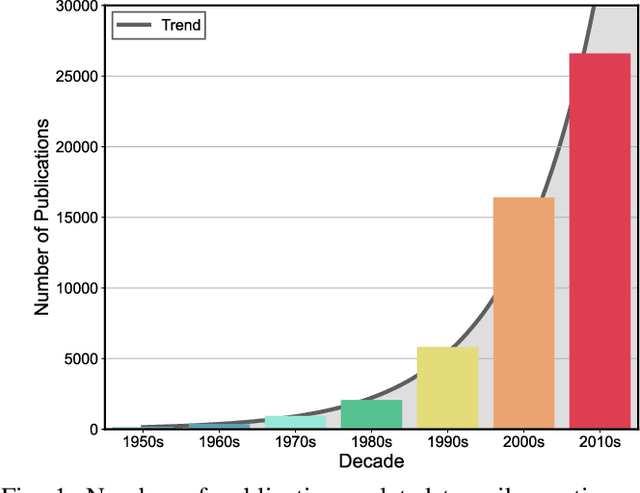
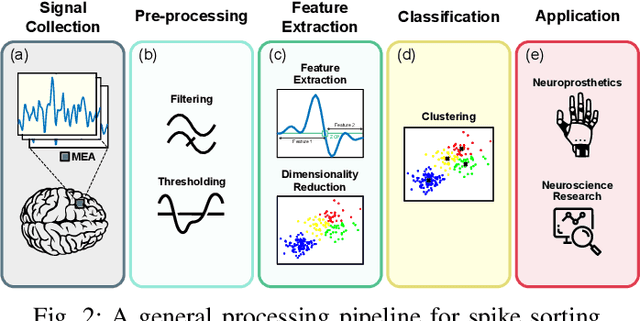

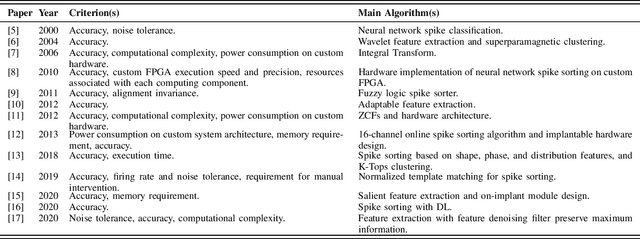
Abstract:Spike sorting algorithms are used to separate extracellular recordings of neuronal populations into single-unit spike activities. The development of customized hardware implementing spike sorting algorithms is burgeoning. However, there is a lack of a systematic approach and a set of standardized evaluation criteria to facilitate direct comparison of both software and hardware implementations. In this paper, we formalize a set of standardized criteria and a publicly available synthetic dataset entitled Synthetic Simulations Of Extracellular Recordings (SSOER), which was constructed by aggregating existing synthetic datasets with varying Signal-To-Noise Ratios (SNRs). Furthermore, we present a benchmark for future comparison, and use our criteria to evaluate a simulated Resistive Random-Access Memory (RRAM) In-Memory Computing (IMC) system using the Discrete Wavelet Transform (DWT) for feature extraction. Our system consumes approximately (per channel) 10.72mW and occupies an area of 0.66mm$^2$ in a 22nm FDSOI Complementary Metal-Oxide-Semiconductor (CMOS) process.
An Amendment of Fast Subspace Tracking Methods
Feb 24, 2012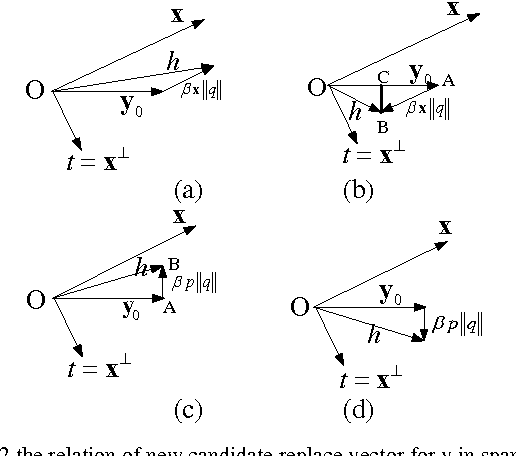
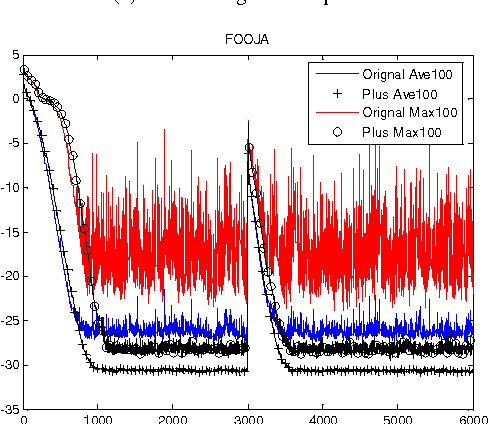
Abstract:Tuning stepsize between convergence rate and steady state error level or stability is a problem in some subspace tracking schemes. Methods in DPM and OJA class may show sparks in their steady state error sometimes, even with a rather small stepsize. By a study on the schemes' updating formula, it is found that the update only happens in a specific plane but not all the subspace basis. Through an analysis on relationship between the vectors in that plane, an amendment as needed is made on the algorithm routine to fix the problem by constricting the stepsize at every update step. The simulation confirms elimination of the sparks.
An Efficient Automatic Mass Classification Method In Digitized Mammograms Using Artificial Neural Network
Jul 29, 2010



Abstract:In this paper we present an efficient computer aided mass classification method in digitized mammograms using Artificial Neural Network (ANN), which performs benign-malignant classification on region of interest (ROI) that contains mass. One of the major mammographic characteristics for mass classification is texture. ANN exploits this important factor to classify the mass into benign or malignant. The statistical textural features used in characterizing the masses are mean, standard deviation, entropy, skewness, kurtosis and uniformity. The main aim of the method is to increase the effectiveness and efficiency of the classification process in an objective manner to reduce the numbers of false-positive of malignancies. Three layers artificial neural network (ANN) with seven features was proposed for classifying the marked regions into benign and malignant and 90.91% sensitivity and 83.87% specificity is achieved that is very much promising compare to the radiologist's sensitivity 75%.
* 13 pages, 10 figures
 Add to Chrome
Add to Chrome Add to Firefox
Add to Firefox Add to Edge
Add to Edge